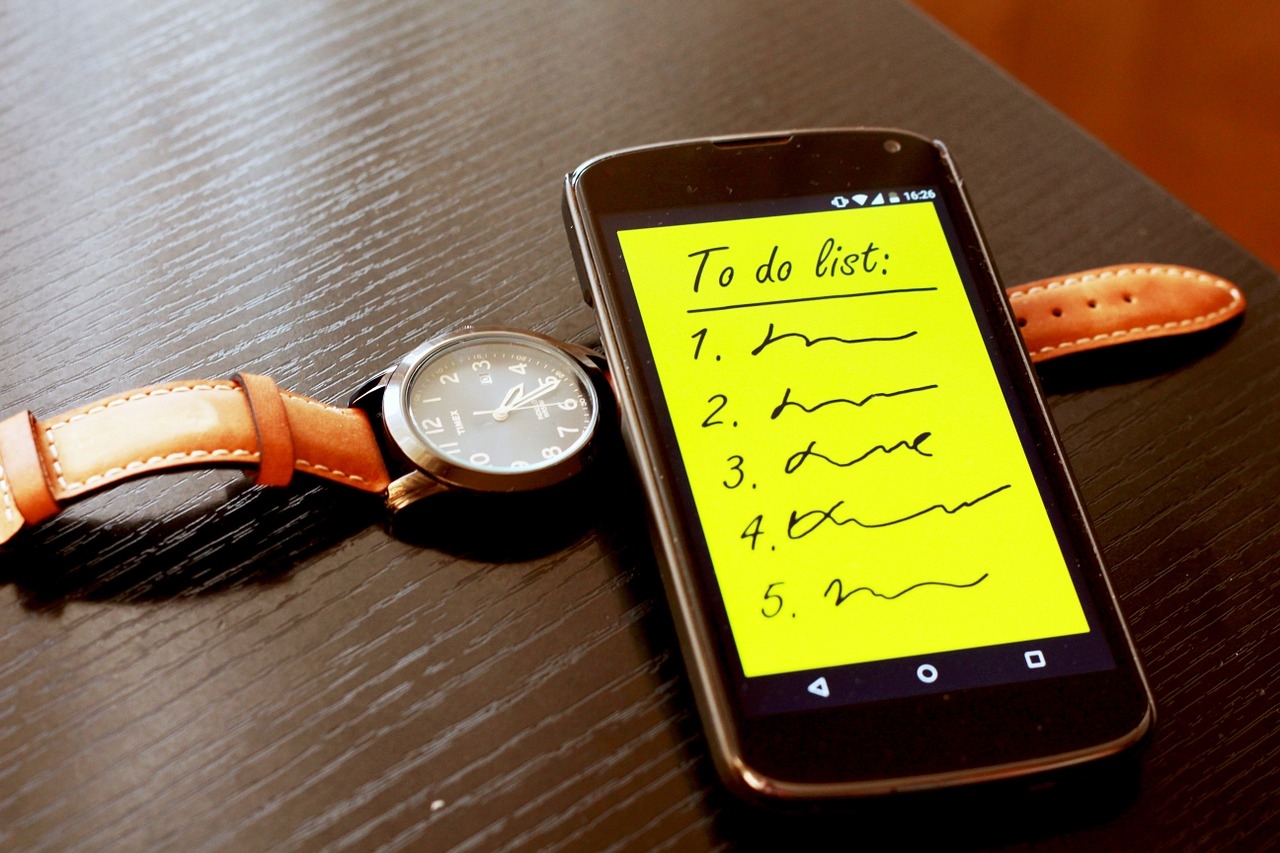— November 29, 2018

bohed / Pixabay
Writing a to-do list sounds easy — simply jotting down all of your worries and to-dos on a sheet of paper… What could be so hard? The truth of the matter is: there’s a large difference between writing a to-do list and writing an effective to-do list. Because an effective to-do list is more than just writing out a never-ending list of things you hope to get done. In fact, it involves prioritization, time management and self-disciple. In order to reach peak productivity and truly get things crossed off your list, you have to be realistic with your to-do list, and the way you craft it. Luckily, there are a number of tricks and tips you can try in order to create the perfect to-do list to help you get everything done.
From using “if-then” planning to marking your “MITs”, here are seven to-do list tips from professionals for crafting the perfect to-do list:
1. Don’t overload yourself with to-dos.
According to research, 41 percent of to-do items are never completed. That’s why it’s incredibly important to be realistic when writing out your to-do list, and only write down items that you plan to complete that day. Always remember there are other days within the week to get things done, so plan your time accordingly.
2. Use “if-then” planning.
Writing down your projects is a great first step. However, when writing a truly effective to-do list, it’s important to break down every step of a project so you can track your progress and create a realistic timeline for when something will be completed. It’s also vital to focus on specific actions rather than vague goals. To help you create a detailed and actionable to-do list, Psychology Today suggests using “if-then” planning. If-then planning not only helps you figure out what you need to do but also when and where you will do it. The general format of an if-then statement is:
“If (or When) XYZ occurs, then I will XYZ.”
For example, “If it’s Tuesday morning, then I will check in with all of my direct reports.”
If-then planning helps to make you accountable for your work and forces you to get things done even when you don’t feel like it.
3. Write things out.
While many people opt for apps and special tech gadgets to help with their daily to-dos, research finds that you’re actually better off going the old-fashioned route and getting out a pen and paper. According to a recent study by professors from Princeton University and the University of California, Los Angeles, writing things out forces a person to be selective with their notes, and that extra layer of processing material makes it more memorable.
Thus, by writing out the things you need to do everyday, you’re helping to draw a mental picture of what your day should look like.
4. Divide your list into sections.
With so many things on your mind, it can be difficult to cut through the noise and prioritize what needs to get done. Robert Pozen, a senior lecturer at MIT and the author of Extreme Productivity: Boost Your Results, Reduce Your Hours, suggests breaking up your list into sections. For Pozen, that means breaking up his master to-do list into three smaller lists. His first list incorporates events, meetings and phone calls that he must attend to that day; the second one lists out what he hopes to get done during those appointments; and the third is for all of his remaining to-dos that he needs to get done but doesn’t have any room in his calendar. When he has downtime, he’ll begin to work through the third list.
5. Use the “SUG” method.
When it comes to to-do lists, prioritization is key. If you’re not prioritizing correctly, there’s a good chance you’re struggling to cross off items on your list. To help, entrepreneur and author David Nour shares his approach that he calls the “SUG” method, meaning “seriousness, urgency and growth.” Before writing your to-do list, ask yourself three questions for every task:
- Seriousness: How important is this task or issue?
- Urgency: How long will it take to complete?
- Growth: Will this issue get worse if I wait to tackle it?
Next, arrange the three “SUG” categories into columns, and rank “high” or “medium” for seriousness and urgency, and “yes” or “no” for growth. Once you’ve finished, you’ll have a chart of prioritized tasks to get started on.
6. Mark your MITs.
Josh Kaufman, author of The Personal MBA, recommends marking your “MITs,” meaning “most important tasks.” After you’ve created your to-do list, look through it and mark two or three tasks as “MITs.” These are tasks that must absolutely get done that day because they will yield the most significant results, and take priority over the other tasks.
7. Create a “done” list.
Busyness does not always translate into accomplishment. And every so often, there are days when you likely find yourself running around to last-minute meetings, hopping on phone calls and answering emails. And at the end of the day, you ask yourself: What did I even get done today?
For a solution to this question, start creating a “done” list in addition to your to-do list. A done list will include a list of every small win and achievement from the day. As tech entrepreneur and investor Marc Andreessen explains, “Each time you do something, you get to write it down and you get that little rush of endorphins that the mouse gets every time he presses the button in his cage and gets a food pellet.” Research shows that reflecting on what you’ve achieved actually makes you more productive by increasing endorphins which ultimately increase energy levels.
Business & Finance Articles on Business 2 Community
(85)
Report Post






